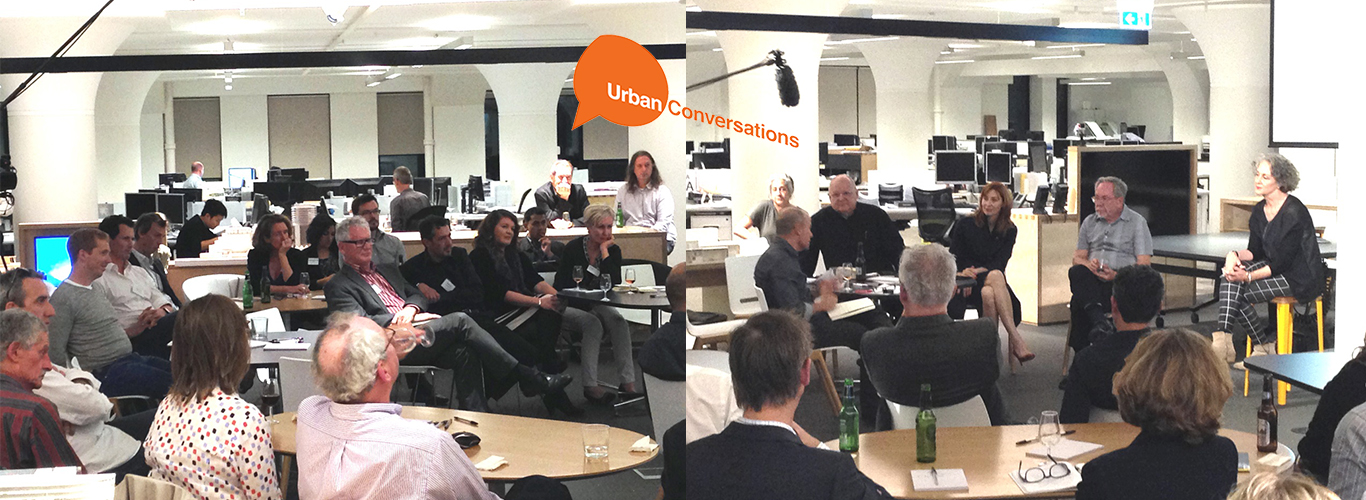Urban Conversations 3: Street Grids, White Roofs, & Solar Responsive Cities

COX Richardson Architects and Planners, in collaboration with UNSW Built Environment, hosted the third session of Urban Conversations in their Sydney studio on the 15th of September. The discussion was led by Professor Norbert Lechner of Auburn University, Alabama USA, an authority on solar responsive buildings. Associate Professor of Practice, Elizabeth Farrelly chaired the session with Maria Atkinson, inaugural CEO of the Green Building Council of Australia and Tone Wheeler, Associate Professor of Practice at UNSW, responding.
Professor Lechner spoke on solar responsive design and the way that it can assist in cooling the planet, reducing energy consumption and therefore costs for households and buildings. Lechner is critical of the sustainability focus on buildings rather than looking more broadly at the city.
Intelligent orientation can reduce the need for air conditioning and heaters to artificially regulate heat and instead use design to control the natural heat that a house absorbs each season. Lighter colours for buildings, streets and pavements would radically reduce levels of heat retention compared to that of darker colours. Professor Lechner claimed that, ‘white roofs gain 50% less heat than black roofs’ hence assisting in the regulation of house temperature. Also highlighting the environmental benefits he quoted Stephen Chu, Lead Secretary of Energy and Nobel Laureate, ‘making pavements and roofs white or light coloured will reduce global warming as much as taking all cars of the world off the road for 11 years’.
Maria Atkinson responded that ignorance, or rather a lack access to usable information, is the greatest factor hindering the ability to design more sustainable buildings. In Atkinson’s view the solution is open source data. The intellectual property of designs should be open source in order to develop sustainable communities, rather than individual buildings.[/vc_column_text][/vc_column][vc_column width=”1/2″][vc_column_text]Tone Wheeler then responded that sustainability is treated as an engineering problem rather than a design one. Design is required to find solutions. Wheeler also believes that more focus should be on the public domain of streets rather than individual buildings saying, ‘no one is consciously working on the streets – they are the accidental result of putting buildings together’.
Ensuing discussion between the audience and the speakers confirmed a general consensus that the focus today is in fact on buildings rather than streets, there was however significant debate about whether such a focus on the public domain should necessarily dictate the layout of streets.
Director Joe Agius questioned Professor Lechner’s focus on grid streets, arguing that while many towns have traditionally been laid out on simple north south grids, this would be inappropriate where the natural topography of the land, ridge lines and slopes should be taken into account. Lechner agreed that while all factors should be taken into account, the vast majority of new housing estates in the US on flat sites ignored orientation and were designed by traffic engineers with ‘efficient’ vehicle distribution as the main concern.
In conclusion Professor Lechner proposed a paradigm shift in thinking about solar ‘gain’. Rather than continuing to think about how technology can better capture the energy of the sun, solar responsive cities should be designed to ‘reject’ the sun and ‘send it back to the sky’. While this view may not work in the colder countries requiring significant amounts of winter heating, Lechner’s points are highly relevant to the Australian context and may be even more so in the future as the impacts of climate change are felt. All speakers concluded by agreeing that a sustainable future will require a focus back on the city, not just on high tech individual buildings.